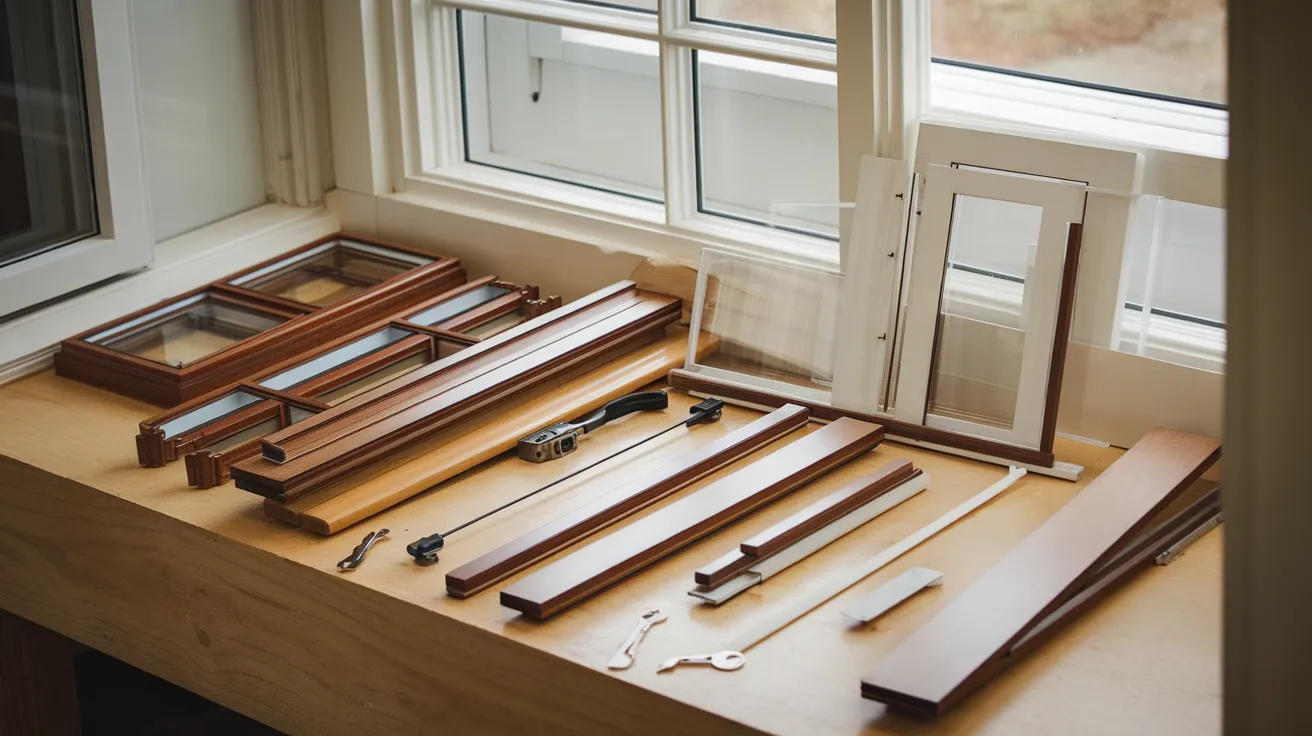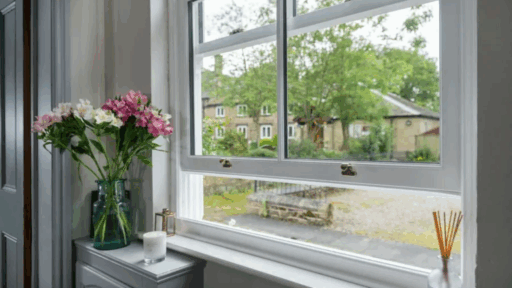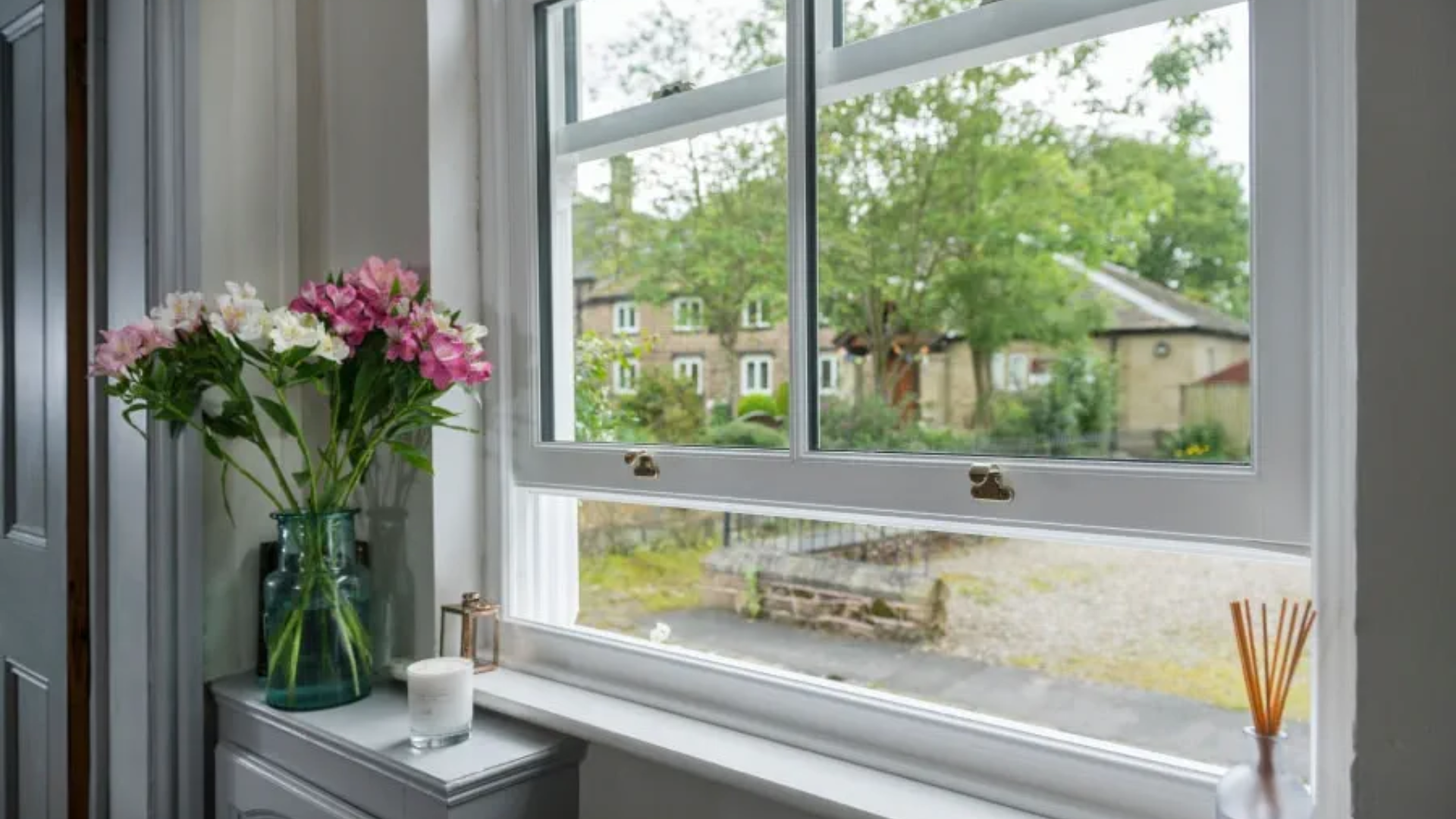Windows are in almost every room of your house. You open them for fresh air and close them to keep warm or cool.
But do you really know how they work? Most people don’t think about the parts inside a window. They use them every day without a second thought.
One of the most important parts is called the sash. It’s the part that holds the glass and moves up, down, or side to side when you open the window.
If you understand what a window sash does, you’ll take better care of your windows and catch small problems early.
Understanding how this one part works can help you save on repair costs and explain things more effectively to professionals.
In this article, I’ll break everything down in a simple way. You’ll feel more confident about your windows by the end of the process.
What Is the Sash of a Window?

The sash is the part of your window that moves up and down when you open or close it. It’s the frame that holds the glass panes.
When you lift a window or slide it sideways, you’re moving the sash.
It’s like a picture frame that holds glass instead of a photo. The sash sits inside the larger window frame and is often made of wood, vinyl, or aluminum.
Some windows have one sash, while others have two. Double-hung windows have two moving sashes. Single-hung windows only have one sash that moves.
The sash also holds the weatherstripping. This helps block drafts and keeps your energy bills lower.
Components of a Window Sash

A window sash isn’t just one piece; it’s made up of a few key parts that work together to hold the glass and let the window open or close properly:
- Rails: These are the horizontal pieces at the top and bottom of the sash. The bottom rail is the part you lift or push to open the window.
- Stiles: These are the vertical sides of the sash. They connect to the rails and help hold the frame together.
- Glass Pane: This is the actual glass in the middle. Some sashes have a single pane, while others have two or more for better insulation.
- Muntins (Optional): These are the thin strips that divide the glass into smaller sections. Sometimes they’re just decorative, especially in newer windows.
- Weatherstripping: This material lines the edges of the sash to keep out air and moisture when the window is closed.
Each of these parts plays a crucial role in determining how well your window functions and its overall lifespan. Keeping them in good shape helps your windows stay safe, energy-efficient, and easy to use
Window Sash vs Other Window Parts

People often confuse different window parts. Let me clear this up for you. Understanding the differences helps you communicate more effectively with repair personnel and suppliers:
1. Sash vs Frame
Understanding the difference between a window sash and a window frame helps you identify problems and communicate effectively with contractors.
People often confuse the two, but they serve distinct roles. The frame stays fixed on the wall, while the sash is the moving part that holds the glass.
| Feature | Window Frame | Window Sash |
|---|---|---|
| Function | The permanent structure that holds the window | Movable part that holds the glass |
| Movement | Does not move | Slides or swings to open/close |
| Material Support | Supports the full window assembly | Supports only the glass pane |
| Size | Thicker and larger | Smaller, fits inside the frame |
| Maintenance Focus | Usually checked for rot or seal damage | Checked for smooth movement and seals |
Knowing this difference helps you better maintain your windows and decide if a repair is needed for the frame, the sash, or both.
2. Sash vs Pane
Many people mix up the terms “pane” and “sash,” but they’re not the same thing. Understanding the difference can save you time and money when unexpected repairs arise.
The pane is just the sheet of glass. The sash is the movable frame that holds the glass in place.
| Feature | Window Pane | Window Sash |
|---|---|---|
| Definition | The glass part of the window | The frame that holds one or more panes |
| Material | Made of glass | Made of wood, vinyl, or metal |
| Function | Provides visibility and insulation | Moves to open or close the window |
| Replacement | Replace if the glass breaks | Replace if the frame is damaged or loose |
| Common Mistake | Often confused with the sash | Often confused with the pane |
Knowing this difference helps when talking to contractors or shopping for replacement parts. It ensures you get the fix you really need.
3. Sash vs Muntin
Muntins are the narrow strips that divide a window’s glass into smaller sections. You’ll find them sitting inside the sash, either as real dividers or just decorative overlays.
In older windows, they were needed for strength and structure. Today, most are merely for design purposes.
| Feature | Muntins (Grids/Dividers) | Sash |
|---|---|---|
| Definition | Thin strips dividing the glass | The movable frame holding the glass |
| Function | Decorative or structural in older windows | Allows the window to open and close |
| Material | Wood, vinyl, or metal | Wood, vinyl, or metal |
| Use | Often used for style | An essential part of the window structure |
| Can it Exist Alone? | No, always part of a sash | Yes, it can exist without muntins |
Muntins add visual appeal, but they rely on the sash to hold them in place. If your window has them, it’s all part of the sash design.
4. Sash vs Sill
The sill is the bottom piece of the window frame. It’s like a narrow shelf that protrudes slightly, helping water run off.
When the window is closed, the sash rests right on top of it.
| Feature | Window Sill | Window Sash |
|---|---|---|
| Location | Bottom of the window frame | Inside the frame, above the sill |
| Movement | Fixed, does not move | Moves to open and close the window |
| Purpose | Directs water away from the wall | Holds the glass and allows ventilation |
| Material | Usually wood, vinyl, or metal | Same – wood, vinyl, or metal |
| Maintenance Issues | Prone to water damage | Can stick or jam if the sill is damaged |
The sill may look simple, but it plays a big role in how well your window works. If it’s in bad shape, your sash may not open or close properly.
Why Window Sashes Matter?
Window sashes do more than hold glass in place. They play a big role in your home’s comfort, energy use, and even its value.
When a sash is damaged or doesn’t seal tightly, outside air slips in, causing your heater or air conditioner to work much harder and resulting in higher energy bills each month.
A broken sash also affects your safety. If it doesn’t lock right, it can become an easy way in for burglars. Many older windows have worn-out locks or loose parts.
Sashes matter when selling your home, too. Clean, smooth-working windows with tight seals leave a good impression.
If water leaks through a bad sash, it can cause serious damage to your walls. That includes mold, rot, and expensive repairs.
Even noise sneaks in through loose sashes. A tight fit helps keep your home quiet and peaceful.
Maintenance Tips for Window Sashes
Keeping your window sashes in good condition helps them last longer and function more efficiently. It doesn’t take much time, but skipping care leads to costly repairs.
The following are simple tips I’ve learned from years of hands-on experience:
- Clean the tracks regularly with a vacuum and a damp cloth.
- Avoid harsh cleaners that can damage seals.
- Check weatherstripping twice a year for cracks or gaps.
- Replace worn or missing weatherstripping right away.
- Lubricate tracks and hinges annually with silicone spray.
- Avoid oil-based products, as they attract dirt and can be difficult to clean.
- Repaint or stain wood sashes if the finish looks dull or worn.
- Always keep bare wood sealed to prevent moisture damage.
- Test and tighten hardware, such as locks and handles, to ensure they are secure.
- Replace any broken or loose hardware promptly.
- Watch for moisture or fog between glass panes. It means the seal is failing.
- Never force a sticky sash. Find and fix the cause first.
Conclusion
Understanding your window sashes helps you take better care of your home. You’ll catch problems early and avoid bigger, more expensive repairs.
You’ll also feel more confident when speaking with contractors.
The sash is the working part of your window. It holds the glass and controls airflow, comfort, and energy use.
When it works well, you hardly notice it. But when it sticks or leaks, the whole room feels it.
Sash care doesn’t take much time. Clean tracks, inspect seals, and address minor issues before they escalate. If unsure, call a pro. They’ll spot things you might miss.
Have you had sash problems before? Share your story below. It might help someone else.
If this blog helped you understand Windows better, you’ll definitely want to check out the guide on turning a window into an exterior door.
Frequently Asked Questions
Can I Replace Just the Sash?
Yes, many windows allow sash-only replacement. It’s cheaper than full window replacement and often solves issues like drafts, broken glass, or worn-out hardware without major remodeling.
Why Is My Window Sash Sticking?
Most often, it’s caused by dirt, old paint, or moisture-swollen wood. Cleaning the tracks and lightly sanding painted areas can usually fix the problem quickly and affordably.
What’s the Best Material for Window Sashes?
Vinyl needs the least upkeep. Wood offers classic style. Aluminum is very strong. The best choice depends on your budget, your home’s style, and your local climate needs.
How Do I Know If My Sash Needs Replacement?
If you see rot, broken glass, air drafts, or difficulty opening, it’s time. When repair costs more than half of a new sash, it’s smarter to replace it altogether.
Can I Paint My Window Sashes?
Yes, you can paint them. Use good-quality exterior primer and paint. Sand and clean the surface first. That helps the paint stick better and last much longer.








